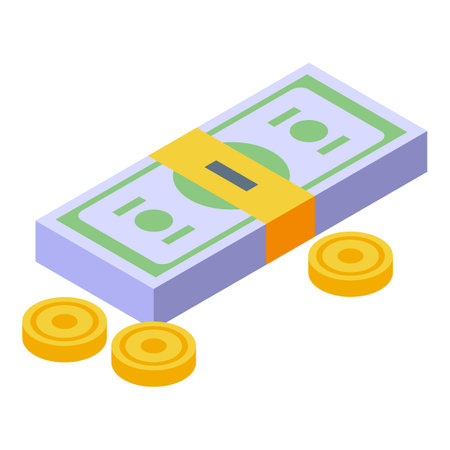1. Why Homeowners Need Emergency Funds
Owning a home in the United States comes with many responsibilities—and unexpected costs. Unlike renting, homeowners are responsible for all repairs and maintenance, which means that when something goes wrong, it’s up to you to fix it. Emergency funds are crucial because they help you cover these surprise expenses without derailing your budget or resorting to credit cards.
Common Unexpected Costs for Homeowners
Homeownership brings unique risks and unplanned expenses. Here are some of the most common situations where an emergency fund can be a lifesaver:
| Unexpected Event | Potential Cost (USD) | Description |
|---|---|---|
| HVAC Breakdown | $3,000 – $7,500 | Replacing or repairing heating and cooling systems, especially during extreme weather. |
| Roof Damage | $5,000 – $15,000+ | Storms, fallen trees, or old age can cause leaks or structural issues. |
| Plumbing Emergencies | $300 – $4,000+ | Burst pipes or sewer line backups can happen unexpectedly. |
| Natural Disasters | $1,000 – $50,000+ | Hurricanes, tornadoes, wildfires, and floods can lead to major repairs or even total loss. |
| Appliance Failure | $500 – $2,500 per appliance | Major appliances like refrigerators or water heaters rarely give much warning before breaking down. |
| Pest Infestation | $150 – $2,000+ | Termites, rodents, or other pests can cause costly damage if not addressed quickly. |
The Importance of a Dedicated Emergency Fund
An emergency fund specifically set aside for home-related surprises gives you peace of mind. It helps you avoid using high-interest credit cards or dipping into retirement savings when disaster strikes. Plus, having this safety net means you can address problems right away—preventing small issues from turning into bigger (and more expensive) ones.
2. How Much Should You Set Aside?
Setting up the right amount for your homeowner emergency fund can feel overwhelming, but breaking it down makes it much more manageable. The amount you need depends on several factors, including the size and age of your home, its location, and the typical repair costs in your area. Here’s how to figure out what’s right for you.
Consider Your Homes Unique Needs
No two homes are exactly alike. Start by thinking about these key elements:
- Property Size: Larger homes usually mean higher repair costs. More rooms, more plumbing, and bigger roofs all add up.
- Age of Home: Older houses often require more frequent repairs or replacements (think roofing, heating systems, or old pipes).
- Location: Is your area prone to storms, flooding, or earthquakes? Local weather and climate can impact maintenance needs and costs.
Typical U.S. Home Repair Costs
To give you a starting point, here’s a look at some common repairs and their average U.S. costs:
| Repair Type | Average Cost (USD) |
|---|---|
| Roof Replacement | $8,000 – $15,000 |
| Water Heater Replacement | $1,000 – $2,500 |
| HVAC Repair/Replacement | $300 – $7,500 |
| Plumbing Repairs | $150 – $2,000+ |
| Appliance Replacement | $400 – $2,500 each |
| Mold Remediation | $1,000 – $4,000+ |
| Foundation Repair | $2,000 – $7,000+ |
A Simple Rule of Thumb
A good starting point for homeowners is to set aside 1% to 3% of your homes value each year for emergency repairs. For example:
| Home Value | 1% Fund per Year | 3% Fund per Year |
|---|---|---|
| $250,000 | $2,500 | $7,500 |
| $400,000 | $4,000 | $12,000 |
| $600,000 | $6,000 | $18,000 |
If your home is older or in an area with severe weather or high labor costs (like California or New York), aim toward the higher end of that range.
Tweak Your Fund as Needed
Your emergency fund isn’t set in stone. Review it every year—especially after making big repairs or upgrades—to make sure you’re still covered if something unexpected comes up.
![]()
3. Types of Home Repairs and Common Unplanned Expenses
Owning a home in the United States means you’ll likely face unexpected repairs at some point. Knowing what kinds of issues might come up helps you prepare your emergency fund and avoid financial surprises. Here are some typical repair scenarios and unforeseen expenses every homeowner should keep in mind.
Common Home Repair Scenarios
| Repair Type | Typical Cause | Potential Cost Range |
|---|---|---|
| HVAC System Breakdown | Age, lack of maintenance, or sudden mechanical failure | $150 (repair) – $7,500 (replacement) |
| Roof Leaks | Storm damage, worn shingles, or old roofing material | $300 – $5,000+ |
| Plumbing Issues | Burst pipes, clogged drains, or water heater problems | $100 – $2,000+ |
| Appliance Failure | Washer, dryer, refrigerator, or dishwasher breakdowns | $200 – $2,500+ |
| Electrical Problems | Faulty wiring or circuit breaker issues | $150 – $2,000+ |
| Pest Infestation | Termites, rodents, or insects causing damage | $200 – $1,500+ |
| Mold Remediation | Leaks or humidity causing mold growth inside walls or basement | $500 – $6,000+ |
Unplanned Expenses to Anticipate
Apart from repair costs, there are other unplanned expenses that can catch homeowners off guard:
- Property Insurance Deductibles: If you need to file a claim for storm or fire damage, be ready to pay your deductible before insurance covers the rest.
- Lawn and Tree Care: Storms can knock down trees or cause major yard debris that requires professional removal.
- Sewer Backups: These can be both messy and expensive if your city’s system overflows into your home.
- Homeowners Association (HOA) Special Assessments: If you live in a community with an HOA, unexpected fees for neighborhood repairs can pop up without warning.
- Pest Control Treatments: Some infestations need several rounds of treatment to fully resolve.
- Temporary Housing: Major repairs might make your home unlivable for a while. Budgeting for hotel stays or short-term rentals is wise.
Stay Prepared with an Emergency Fund
The best way to handle these surprise costs is by having an emergency fund set aside just for home repairs. Knowing what kinds of expenses to expect will help you decide how much you need to save and keep your finances on track as a homeowner.
4. Smart Ways to Build Your Emergency Fund
Having an emergency fund is essential for homeowners, but building one can feel overwhelming. The good news is that you can start small and use some smart strategies to make saving easier and more effective. Here are some practical ways to gradually grow your emergency fund, tailored to U.S. homeowners.
Budgeting: Know Where Your Money Goes
The first step to saving is knowing how much you spend each month. Create a simple budget by listing your monthly income and expenses. Identify areas where you can cut back, such as eating out or unused subscriptions, and reallocate those savings toward your emergency fund.
| Expense Category | Current Spending | Possible Savings |
|---|---|---|
| Coffee Shops | $80/month | $40/month |
| Streaming Services | $30/month | $15/month |
| Dining Out | $200/month | $60/month |
| Total Potential Savings | $115/month |
Automate Your Savings for Consistency
One of the easiest ways to build your emergency fund is by setting up automatic transfers from your checking account to your savings account every payday. Even small, regular contributions add up over time without you having to think about it.
How Automation Helps:
- Makes saving a habit without relying on willpower
- Reduces the temptation to spend extra cash
- Keeps your emergency fund growing steadily, even if you’re busy or forgetful
Choose the Right U.S.-Based Account for Your Emergency Fund
Selecting where to keep your emergency fund matters. You want easy access in case of a home repair emergency but also want your money to earn a bit of interest.
| Account Type | Benefits | Things to Consider |
|---|---|---|
| High-Yield Savings Account (HYSA) | Higher interest rates than regular savings accounts; FDIC-insured at most banks; easy online access | May have limits on withdrawals per month; check minimum balance requirements |
| Money Market Account (MMA) | Slightly higher rates than standard savings; check-writing privileges; FDIC-insured at many banks or credit unions | Might require higher minimum deposits; some transaction limits apply by law (Reg D) |
| Regular Savings Account | No minimum deposit required at many banks; very easy access via ATM or online banking; FDIC-insured | Lower interest rates than HYSA or MMA; money may lose value against inflation over time |
Add Windfalls and Extra Cash When Possible
If you get a tax refund, bonus at work, or cash gifts, consider putting a portion into your emergency fund. These occasional boosts can help you reach your goal faster without affecting your day-to-day budget.
Tip:
- Aim for an emergency fund that covers 3-6 months of essential living expenses—especially important for homeowners facing unexpected repairs!
5. When and How to Use Your Emergency Fund
Knowing What Counts as an Emergency
Your emergency fund is there to protect you from life’s unexpected financial hits, especially as a homeowner. Not every surprise bill should be paid out of this fund, so it’s important to figure out what truly qualifies as an emergency. Ask yourself these questions:
| Question | If Yes | If No |
|---|---|---|
| Is it urgent? (Needs attention right now) | Consider using your fund | Wait or budget for it later |
| Does it affect health or safety? | Use your emergency fund | May not be an emergency expense |
| Will delaying the repair make things worse? | Fund may be needed now | You might have more time to save up |
| Is it completely unexpected? | Emergency fund is designed for this | If planned, use regular savings instead |
Prioritizing Urgent Repairs and Expenses
When emergencies hit, some home repairs are more critical than others. Focus on issues that threaten your living situation or could cause bigger problems if ignored, such as:
- Burst pipes or major plumbing leaks
- No heat in winter or AC failure during extreme heat
- Electrical problems affecting safety
- Roof leaks causing water damage
- A broken front door lock or shattered window compromising security
Repairs That Can Usually Wait:
- Peeled paint or minor cosmetic damage
- A small appliance breaking down when you have a backup option
- Lawn care or landscaping issues unrelated to safety or city codes
- Squeaky floors or sticky doors/windows (unless they prevent entry/exit)
Steps to Take When Using Your Emergency Fund
- Confirm It’s a Real Emergency: Review the table above and consider if the situation meets the criteria.
- Get Multiple Estimates: For big repairs, try to get at least two quotes from licensed professionals so you don’t overpay.
- Avoid Draining Your Fund Completely: If possible, only use what you need and keep the rest available for future emergencies.
- Track What You Spend: Keep a simple record of what you used and why. This helps you rebuild your fund later.
- Plan to Replenish Your Fund: As soon as possible, start putting money back into your emergency account so you’re ready for the next surprise.
Tip: Don’t Use Your Emergency Fund For…
- Upgrades like new countertops or high-end appliances (unless the old one completely fails and is essential)
- Planned renovations or remodeling projects—save separately for these goals!
- Paying off debt unless it’s truly urgent and unavoidable, like preventing foreclosure or utility shutoff.
The main goal is to make sure your emergency fund is always ready to step in when you really need it—protecting your home, finances, and peace of mind.


